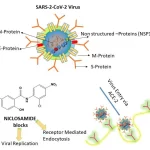Transdermal Drug Delivery
A transdermal drug delivery is accomplished with the use of a transdermal patch. There are both advantages and disadvantages to this method. In most cases, the advantages outweigh the disadvantages. The transdermal patch manufacturer makes the patch using a medical grade adhesive. This enables a specific dosage of medication to be delivered through the skin and directly into the bloodstream of the patient. The patch must be placed on the patient’s skin for this method to be effective. This helps the part of the body impacted recover.
Mental Health Conditions and Transdermal Patches
It is critically important all prescribed non-psychiatric and psychiatric medication is adhered to when used or individuals with a mental health issue. If the prescribed recommendations are not followed, this can lead to a poor health outcome and serious issues. Adherence includes alerting the patient to the possible side effects of the drug, ensuring the patch contains the prescribed dosage and showing the patient how to use the patch correctly. Both adherence to the prescribed treatment and safety must be addressed by the mental care provider to ensure efficient care of the patient.
The interest in safety has led to using alternative methods of delivering the medication in an innovative manner to resolve some of the issues common with mental health patients. Unfortunately, there have not been many clinical studies or research conducted in the area of using transdermal patches for the psychiatric field. Although there has not been much literature published on this subject, it is apparent specific key principles must be followed to prevent the patient from receiving too much of the prescribed medication simply by using additional patches. This is one of the key disadvantages. In some cases, a caretaker must have control over the patches.
Patches and Topical Creams
Patches and topical creams provide an alternate means of controlling the amount of medication received by the patient. The traditional pill is taken once per day. This makes the concept easier to understand and remember. This concept changes if there are side effects, the metabolism is fast which makes a continuous release drug difficult to control or if the plasma concentrations are high. In these instances, the drug may have to be ingested three or four times each day. This is often easy to forget, annoying or not effective for overnight situations.
Both the timing and the dosage can be effectively controlled with the transdermal patch or cream. Of the two, the patch is easier to control. The larger the patch, the bigger the dosage. If the patient needs to discontinue the drug, they can simply remove the patch. Even though some of the drugs will remain in the patient’s system, the plasma concentration is on the low side. This is the reason the nicotine dose can be controlled by smokers using a nicotine patch. Both transdermal patches and creams enable continuous release. The difference is the cream cannot be removed once it has been fully absorbed into the skin.
The way the drug is delivered is through the diffusion of the medication. The patch delivers the drug into the bloodstream through the skin. This is completely different than an IV injection which provides an immediate dose. A pill is often concentrated or time delayed. This affects the way the body absorbs the drug. Transdermal patches enable the individual to maintain a low concentration of plasma. This helps eliminate any side effects. The continuous release also provides a longer period of time for effective dosing. One of the most ideal drugs for a patch are opioids such as morphine.
The Disadvantages of Transdermal Patches
Despite the fact a transdermal patch manufacturer follows all safety precautions, the skin of the patient can be irritated or sensitized by the patch. There are specific drugs that cannot be delivered using this method for this reason. The permeability of the skin naturally limits how much of the drug is able to enter at any given time. Many of the most potent of drugs can only be effectively given using transdermal delivery. There can also be issues caused by the environmental impact on the adhesion of the patch due to the different types of skin.
The Advantages of Transdermal Patches
Transdermal patches have a lot of advantages including avoiding gastrointestinal tract difficulties while being absorbed due to drug interactions with food and enzymes. If the individual has diarrhea or is vomiting, anything taken orally is not advisable. The patch also prevents the drug from passing through the portal and systemic circulation. Therapy multiple times each day is much easier with a transdermal patch because only one application is necessary. This has been shown to improve patient compliance.
Some drugs have a shorter half-life. The activity of these drugs is extended due to the reservoir of the drug within the delivery system and the controlled form of release. It is easy to stop the therapy by simply removing the patch. In case of an emergency, the medication is easy to identify for comatose, unconscious or non-responsive patients. The chances of under or overdosing are decreased due to the pre-programmed and prolonged delivery of the drug at the prescribed therapeutic rate.
ETS Therapy
ETS is a fairly new type of transdermal hormone replacement therapy. This therapy supplies a low dosage of estrogen and is both safe and convenient. The patch is applied to the skin once each week and provides numerous benefits as opposed to the more traditional treatment. The dose of the hormone is low, eliminates the hepatic first pass, manages and prevents post-menopausal symptoms including anxiety, depression, cardiovascular diseases, osteoporosis and vaginal dryness with the treatment only required once per week.
The Specifics of the Transdermal Drug Delivery
The transdermal patches can be administered safely and effectively and are extremely simple and easy to use. The largest organ of the human body is the skin. The skin acts as a protective layer because it covers the entire body. The skin has the ability to redevelop and offers limited but critical penetration. The type of permeation provided by the skin is extremely important. This permeation is necessary for the transdermal patches to work properly. Skin covers the body with three layers of protection. The first layer of skin is referred to as the epidermis. This is the layer the transdermal patch is placed on.
The patch must be placed in a specific way. The side containing the required medication must come in contact with the epidermis or the first layer of skin. Once the medication contained in the patch has reached the second layer of the skin, it is transferred to the deepest or third layer of the skin. The third layer of the skin contains the blood vessels needed for the medication to then be passed into the bloodstream. The only way for the medication to reach the bloodstream is to pass through all three layers of skin and reach the blood vessels.
This application ensures the medication is transferred into the blood. The blood circulates the medication throughout the entire body of the patient using the circulatory system. This direct circulation through the bloodstream ensures the medication will be effective with a significantly reduced chance of any side effects.







